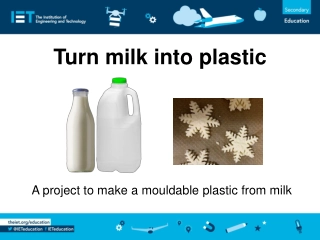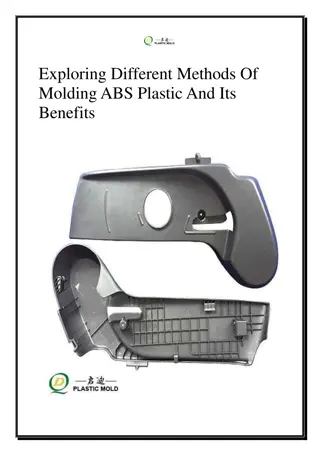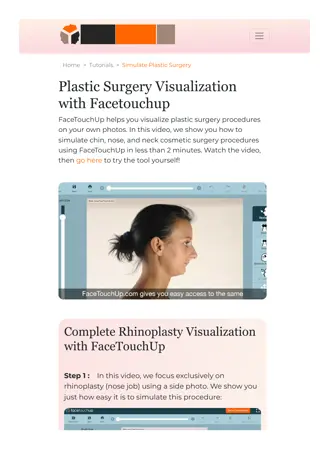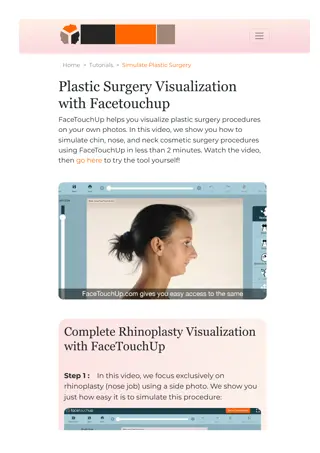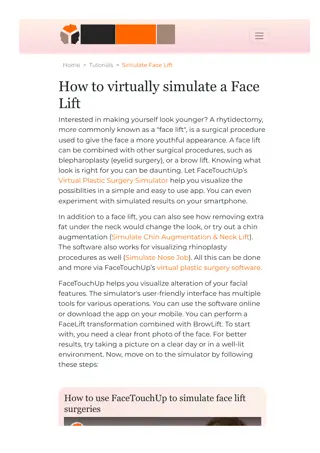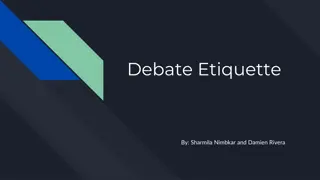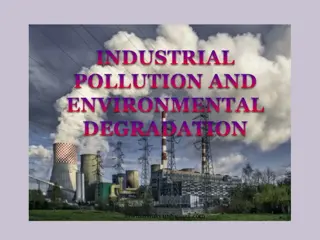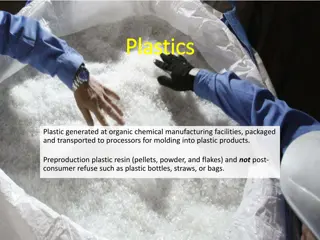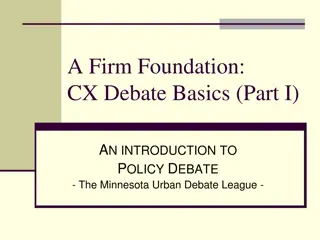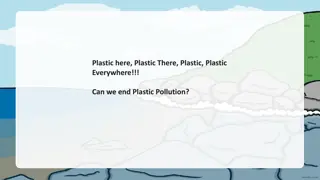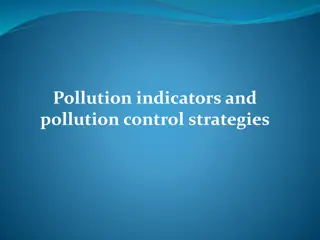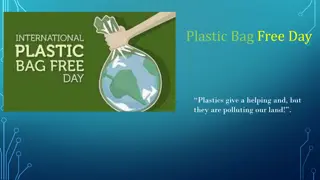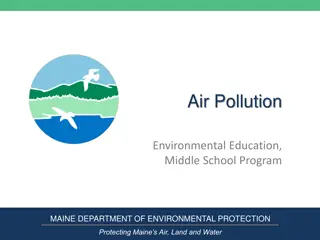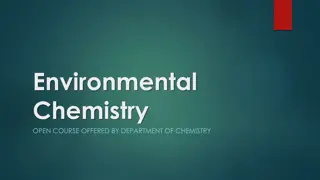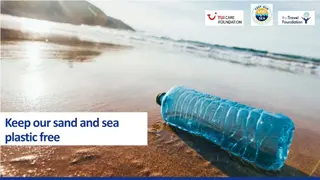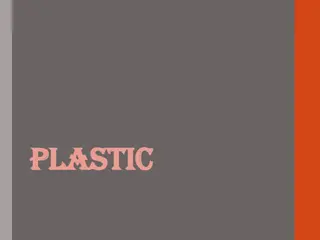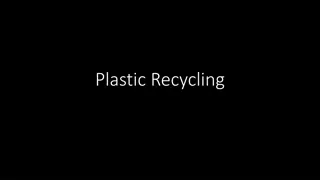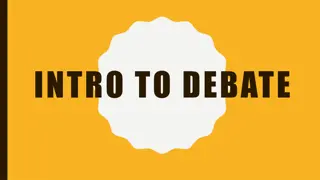Plastic Pollution Debate
Pollution harms the environment in various forms, including plastics. Explore the advantages and disadvantages of plastic use, along with its impact on oceans and wildlife. Consider single-use plastics and sustainable alternatives to mitigate pollution.
Download Presentation

Please find below an Image/Link to download the presentation.
The content on the website is provided AS IS for your information and personal use only. It may not be sold, licensed, or shared on other websites without obtaining consent from the author.If you encounter any issues during the download, it is possible that the publisher has removed the file from their server.
You are allowed to download the files provided on this website for personal or commercial use, subject to the condition that they are used lawfully. All files are the property of their respective owners.
The content on the website is provided AS IS for your information and personal use only. It may not be sold, licensed, or shared on other websites without obtaining consent from the author.
E N D
Presentation Transcript
Thursday 11th February 2021 Plastic Pollution: The Debate In our Topic lesson today we will be looking at the subject of plastic pollution and thinking about the advantages and disadvantages of using plastic. Success Criteria: I know I will be successful in my learning if: I can understand there are different points of view when thinking about the uses of plastic. I recognise that the For arguments refer to the advantages of using plastic. I recognise that the Against arguments refer to the disadvantages of using plastic. I can design a poster which informs people about the use of plastic from one particular viewpoint.
What Is Pollution? Pollution is the name for anything that harms or has poisonous effects on an environment. Pollution usually happens as a side effect of modern-day life. What types of pollution do you already know about?
Pollution Pollution can take many forms. Can you think what pollution might be caused by these parts of everyday life? Some electricity is generated by power plants which burn coal to create power. These power stations emit lots of carbon dioxide and are one of the largest sources of greenhouse gases which are causing global warming. Animal farms produce food; meat and dairy products are consumed all around the world. However, massive amounts of animal waste can emit harmful gases into the atmosphere. Single-use plastics are often hard to recycle or cannot be recycled at all. This means that they often end up in landfill sites or find their way to water: oceans and rivers. Cars are part of everyday life but the fumes given off by vehicles are one of the main causes of air pollution across the world.
Plastics Plastic is a very useful material. It is strong, lightweight, flexible, waterproof, lasts a long time and can be made in many colours or can be transparent! Can you see any objects in your classroom that are made of plastic?
Plastics Some plastic items can be used many times. What examples can you think of? Is your lunchbox made of plastic? What about your pencil case?
Single-Use Plastics However, other plastic items are only used once before we throw them away. What examples can you think of? Objects like these are called single-use plastics.
Plastic Pollution Sometimes, plastics like these can end up in the ocean or in rivers and streams. But how? Plastic that you put in the bin usually ends up in a landfill. While it is being transported, it is often blown away because it is so light. It can be blown into streets, rivers, lakes and even the sea. Sometimes, plastic litter is dropped on the street and swept away by the rain and wind into rivers, streams and drains. Drains lead all the way to the ocean! Putting anything down toilets and sinks that shouldn t be is another way in which plastics end up in rivers and oceans.
Plastic Pollution The effects of plastic pollution can be very severe. Thousands of seabirds and turtles, seals and fish are killed every year from eating or being caught in plastic. One third of all marine mammal species have been found entangled in plastic litter. Jellyfish have even been known to mistake a plastic bag for another jellyfish! Scientists believe that there are now up to 50 trillion pieces of plastic in the oceans. More than eight billion tonnes of plastic ends up in the ocean every year. It is estimated that, by 2050, there will be more plastic than fish in the oceans. Plastic is so strong and long-lasting that every piece of plastic that has ever been made still exists today.
Stopping Plastic Pollution There are things that we can all do to help stop plastic pollution from getting worse. 1. Stop buying single-use plastics, such as drinks bottles, food containers and shampoo. Long-lasting carrier bags, drinks flasks and bars of soap and shampoo are available. 2. Recycle as much plastic as possible. 3. Avoid littering and use bins, especially recycling bins. 4. Only flush toilet paper down the toilet and use a bin for wipes and anything else which does not degrade. There are some people who believe that businesses and governments should be doing more.
What Could Be Done: The Debate Most people agree that plastic pollution is not a good thing but many people disagree over what should be done to help. Restaurants and food companies could stop selling plastic cups, cutlery and straws. These items are all only used once and then thrown away. They are also hard to recycle. Some stores have no packaging for their products whatsoever and customers bring their own boxes and bags to fill with rice, pasta, beans and other foods. Nets made for fishing are usually made of plastic. The fishing industry could slow down to help the oceans to recover. Plastic inside fish could also end up in our food! Supermarkets now charge money for plastic bags but some say that they should be removed altogether. Plastic bags are light and blow into rivers and oceans. They can suffocate animals. Paper straws do not last as well in liquid and cardboard cups are not very waterproof. People don t always have their own containers and straws available. Many people around the world eat fish and depend on it for their survival. Many people would lose their jobs and houses if the fishing industry stopped. Paper bags are not as strong as plastic ones and people may choose not to shop in the places where bags are not available. Shops want people to be able to buy more and carry it home. People often shop when they don t have containers with them and it is easier to buy food that is pre-packed. Packaging also gives information about the food being bought and often lasts longer in sealed packaging.
What Could Be Done: The Debate In some countries, such as Thailand, popular beaches and tourist spots have been closed to help the local wildlife to recover from the litter and fishing. More of this should be done. Making plastic creates lots of greenhouse gases. Companies who make plastic could be stopped or limited. More should be done to recycle the plastic that is currently still in existence around the world, before making more plastic. Closing areas of coastline could ruin tourism in the area, closing local businesses and destroying people s livelihoods. People may stop visiting certain countries if their favourite spots are closed off. Plastic is a strong material with lots of useful properties. Many people would lose their jobs and lots of structures which rely on plastic would be lost. Plastics are very important in places like hospitals, as they are easy to clean. The process of recycling plastic is difficult and expensive. When plastic is melted, at least some new plastic needs to be added in order for it to be usable again.
Time to think and reflect: What is your opinion on plastic pollution? Do you agree that there should be more rules against using plastic? Which suggestions do you agree with?
Tasks: Task 1: Complete the Plastic Pollution Debate For and Against activity. Read the information inside each of the 10 speech bubbles. Decide which statements support the use of plastic ( For ) and which ones argue Against the use of plastic. Use 2 colours to distinguish between these different points of view. Task 2: Choose either the For arguments or the Against arguments. Use the statements you have chosen to design a poster. The aim of your poster is to inform people and raise their awareness of either the positive uses of plastic ( For ) or the disadvantages of using plastic ( Against ).


